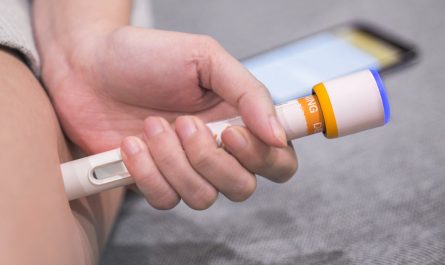Causes of Lymphedema
Lymphedema can develop due to several reasons that impair the lymphatic system and disrupt the normal transport of lymph fluid. Some common causes include damage to the lymph vessels and nodes from surgery, radiation therapy, injuries or infections. Lymphedema often occurs as a long-term side effect of cancer treatment. For example, breast cancer survivors who undergo axillary lymph node dissection or radiation therapy targeting the underarm lymph nodes are at risk of developing lymphedema in the arm on the affected side. Similarly, survivors of cancers such as melanoma, prostate cancer or gynecological cancers may develop lymphedema in the legs if inguinal or pelvic lymph nodes were surgically removed or irradiated. Genetic or congenital conditions that impair the lymphatic system from birth can also cause lymphedema.
Manual Lymphatic Drainage
Manual lymphatic drainage (MLD) is a gentle, hands-on technique performed by a trained therapist to improve lymph circulation. During an MLD session, the therapist uses very light pressure and skin stretching movements to guide lymph fluid away from blocked areas into neighboring lymph vessels. This stimulation encourages drainage and allows swollen tissues to reduce in size over time. MLD aims to empty lymphatic vessels, improve lymph transport capacity and reduce swelling and discomfort. It is generally performed in combination with compression therapy and skin care. MLD helps minimize lymphedema and may prevent its progression if started early. Regular MLD provides good lymphedema management for both arms and legs.
Compression Therapy
Applying compression to the affected limb is key to Lymphedema Treatment. This helps push excess lymph fluid back into active lymphatic vessels to drain it away. Multiple layers of compression bandages or garments are used depending on the severity of lymphedema. Compression stockings, sleeves or gloves maintain continuous but graded pressure. They are customized to each patient’s measurements. Compression therapy should be applied daily for at least 20-22 hours for best results. It decreases swelling, prevents fluid buildup and improves lymphatic drainage. Compression also has the added benefit of improving appearance and allowing tighter clothes to be worn.
Exercise and Lymphedema
A balanced exercise regimen tailored for lymphedema patients can aid management when done correctly. Low impact activities like walking, swimming or stationary cycling benefit lymphedema in arms or legs. They improve lymph and blood circulation without excessively elevating back pressure in swollen tissues which may worsen swelling. Isometric exercises to gently contract affected muscles without straining also help. Strength, flexibility and range-of-motion exercises within tolerance strengthen the limb and lymph vessels. Proper warm-up, cooling down and wearing a compressive garment during exercise are important. High impact activities and repetitive motions should be avoided, especially without compression. A physical or occupational therapist can create a suitable home program.
Complete Decongestive Therapy
Complex lymphedema involving multiple sites or not responding well to single treatments requires a more comprehensive approach known as Complete Decongestive Therapy (CDT). It encompasses manual drainage, layered compression bandaging, an individually tailored exercise program and extensive skin care education. CDT is administered by a specialized therapist in phases over weeks. Daily bandaging combined with exercises and skin care helps reduce swelling significantly in the initial “Intensive Therapy Phase”. The goal is to minimize the limb size as much as possible. In the subsequent “Maintenance Phase”, compression garments are fitted to preserve gains made. Patients are trained for self-care to prevent relapse. CDT delivers highly effective lymphedema management and is very beneficial when started early.
Surgical Procedures for Lymphedema
For advanced, unresponsive lymphedema, surgery may be considered as the next line of treatment. However, surgery alone without postoperative CDT rarely provides a permanent cure. Some surgical options include lymphovenous anastomosis and vascularized lymph node transfers. In lymphovenous anastomosis, functioning lymphatic vessels are connected directly to small veins to bypass blocked nodes, improving lymph drainage. Lymph node transfers involve grafting donor lymph nodes from other sites like the groin. These procedures may help reduce lymphedema size by 30-50% but success depends on factors like extent of pre-existing damage. Microsurgical techniques, laser therapy, suction-assisted lipectomy and liposuction are other options explored. With aggressive post-op therapy, surgery can enable patients to better manage lymphedema long-term when non-surgical approaches have reached limitations.
Advanced Lymphedema Treatment Modalities
Newer technologies are continuously being tested for treating difficult lymphedema. These are still being researched for long-term effectiveness and risks versus standard therapies. Low-level laser therapy (LLLT) uses non-invasive infrared light to stimulate lymphangiogenesis or new lymph vessel formation. This may aid CDT in hard-to-treat areas. Pneumatic compression pumps inflation garments in synchronized patterns to mobilize edema. Diuretics or benzopyrones are occasionally prescribed for generalized edema but monitoring is needed. Implantable venous shunts that drain excess lymph directly into the bloodstream have shown promising preliminary results in clinical trials. Gene and stem cell therapies hold future promise by enabling lymphatic regeneration to help control lymphedema in a more definitive manner. Research is also studying the roles of lymphocytes, growth factors and microRNAs involved in lymphatic repair.
*Note:
1. Source: Coherent Market Insights, Public sources, Desk research
2. We have leveraged AI tools to mine informatLymphedema can develop due to several reasons that impair the lymphatic system and disrupt the normal transport of lymph fluid




